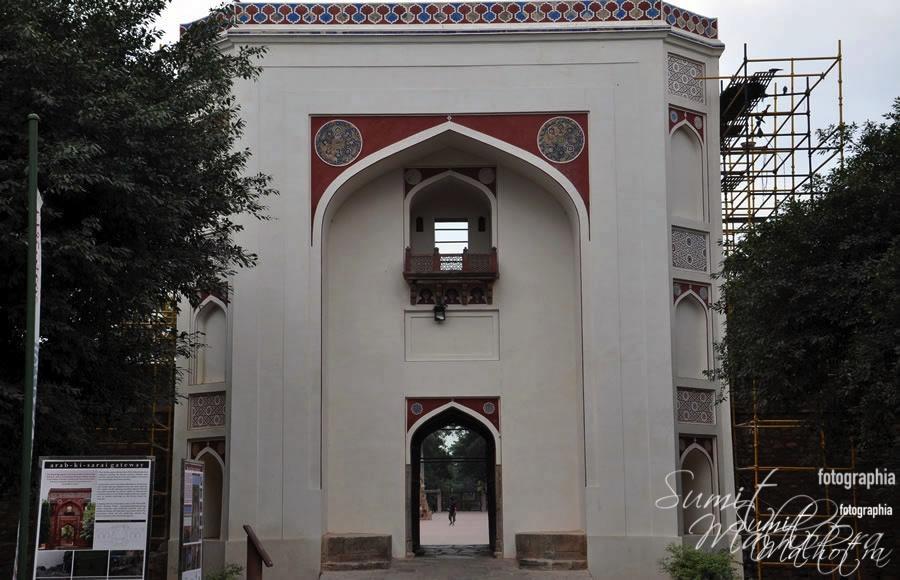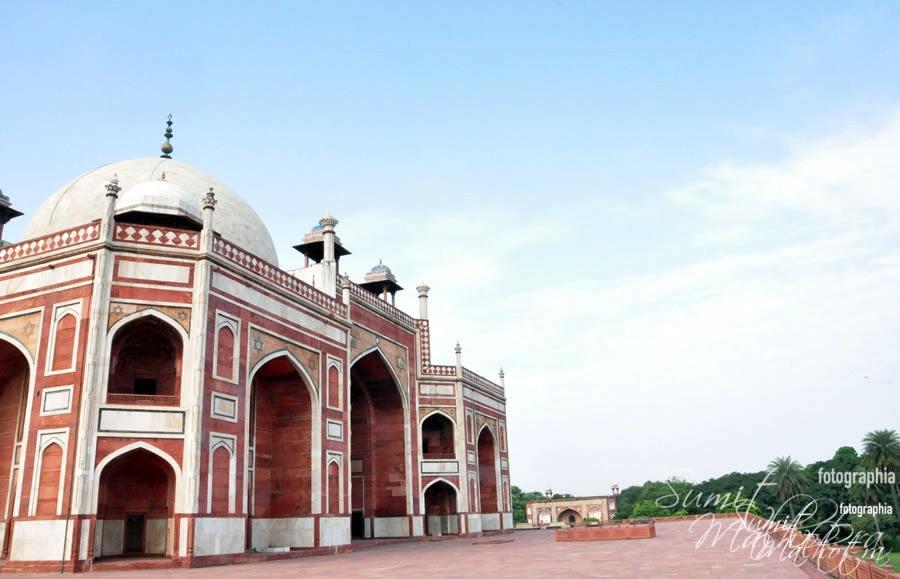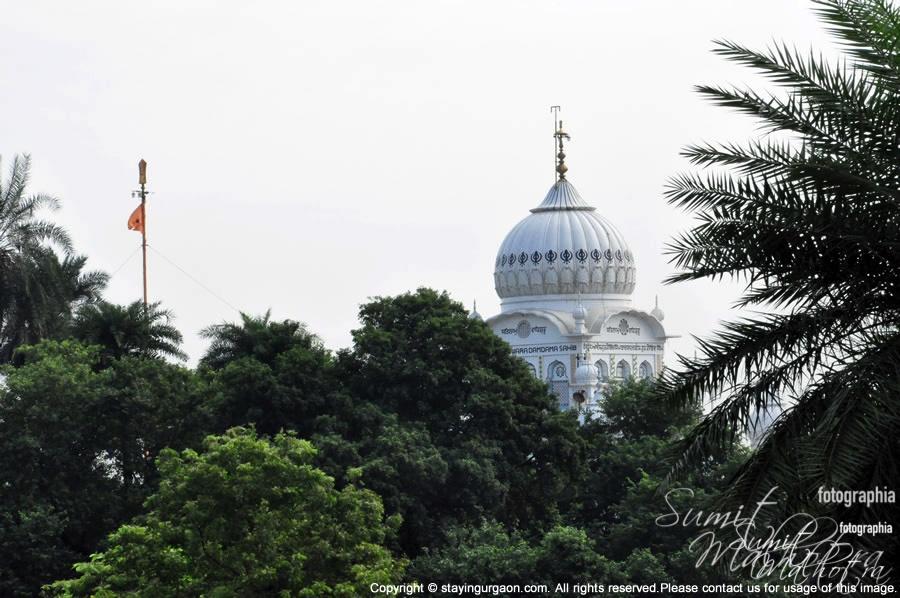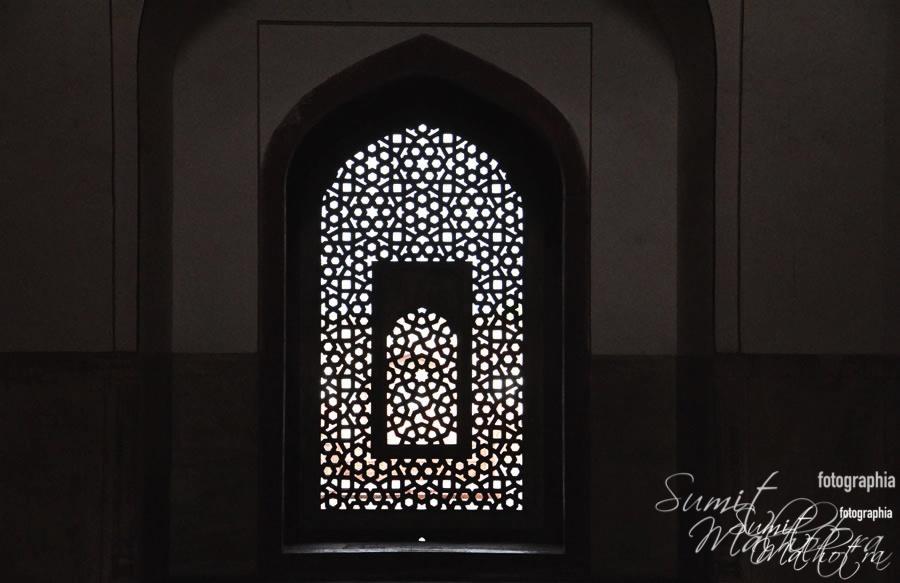Humayun’s Tomb Delhi @ AM 6.15 – Humbly! It is usually an unknown hour for me. However, today was different.
Meet the duo, us, a very upbeat Mahadevan Chidambaram and I, the drowsy eyed reluctant early bird, had planned for a short motorbike ride to capture the recently restored Humayun’s Tomb through our lenses.
Today, Humayun’s Tomb is one of the best tourist places to visit in Delhi. It is among the best-preserved heritage monuments in Delhi that embodies Mughal architectural grandeur.
Humayun’s Tomb in Delhi is the first-of-its-kind opulent mausoleum built in India and also the first garden-tomb in India. Also known as Maqbara-e-Humayun, this splendid 16th-century monument looks less like a tomb complex and more like a luxurious palace.
In 1993, the tomb complex gained the status of a UNESCO World Heritage Site for its cultural and historical significance. The whole complex is currently run and maintained by the Archaeological Survey of India (ASI).
Over the centuries, Humayun’s Tomb witnessed much neglect and decline. In the 18th-century, the beautiful gardens surrounding the monument gave way to agricultural fields.
After the colonial rulers took over Delhi, the Charbagh Garden was overlaid with an English-style garden in 1860. However, in the early part of the 20th-century, the tomb complex was restored with the original gardens at the order of Lord Curzon, the then Viceroy of India.
And now, the monument that took 9 years to build 400 years ago took 7 years to restore (Wow!) and has been the talk of the town ever since Prime Minister Manmohan Singh inaugurated it on 18th of September 2013.
The latest massive restoration work of Humayun’s Tomb was undertaken by the Aga Khan Trust for Culture & Sir Dorabji Tata Trust, in partnership with Archaeological Survey of India (ASI).
It involved a 200,000 man-day effort of craftsmen (including master craftsmen from Uzbekistan) who worked to apply 21,000 square metres of lime plaster, reset 5,400 square metres of sandstone on the terrace and lift 3,700 square metres of the stone plinth to reconstruct the collapsed arcade and dome.
Around 12 hectares of lawns were replanted at Humayun’s Tomb, and over 2500 trees and plants, including mango, lemon, neem, hibiscus and jasmine cuttings, were planted in the gardens.
A new water circulation system for the walkway channels was installed. To ensure that water flowed naturally through the channels and pools on the 12-hectare (30 acres) site without the aid of hydraulic systems, the water channels were re-laid to an exacting grade of one centimetre every 40 metres (1:4000 scale).
This eventually enabled water to flow through the watercourses in the gardens, and dormant fountains to start functioning once again.
Other tasks in this mammoth restoration project included setting up a rainwater harvesting system using 128 groundwater recharge pits, silt removal and revitalisation of old wells that were discovered during the restoration work.
Click here to download/read official documentation in PDF format. Do you fancy a visit now?
Well, we did. We set out at AM 6:55 and rode directly to Humayun’s Tomb – “Hmm … No breakfast”. As we parked, so did the ticket issuer.
Morning walkers, photography enthusiasts and the twosomes dotted the manicured lawns. The world was already there. Blimey! At AM 7:40. Well! We will have humans compatriots in our photos. No! More luck.
The pathways also had a few canines prancing around this UNESCO World Heritage Site. Phew! I thought aloud if they had volunteered to stay away for the inauguration and were back to reclaim what once belonged to the Sur Dynasty and then the Mughals. No response. The mutts stayed muted.
At Humayun’s Tomb, we picked up our tickets for Rs.10 each after convincing the chatty ticket issuer that we were not NRIs (NRIs and Overseas Visitors have to shell out Rs.250) and entered the precincts.
These fees for Humayun’s Tomb India may have changed, so do check if you are planning to visit. Humayun’s tomb timings should remain the same
The pathway to the main doorway was lined up with vinyl storyboards and standees (the site exhibition) announcing the various aspects of the restoration of the tomb.
These may stay hoisted here till nature claims them or the scavengers strike. I prefer the scavengers so that the cleanup happens sooner and the modern plastic disappears from the horizon of historic splendour.
The great part starts from here. The main double-storeyed gateway of Humayun’s Tomb was shiny new though it is still work in progress (we saw the camouflaged scaffolding).
As we crossed over there it was – Humayun’s Tomb, aplomb in its restored grandeur with lush green Char Bagh & The Waterways (hmm… nice name for a rock band). The scene was incredibly tranquil and calming.
The only music being sung was by the merrily chirping parrots. Even the canines didn’t do any royal bow wow. And we did spot some peacocks too.
A visit around this magnificent sturcture will take you around an hour or more depending upon how strong your wanderer spirit is. There is a lot to see and the place is very well marked.
On the way back, you may also seek blessings at Gurudwara Damdama Sahib which is right next door. If you intend to go with your family and “the” picnic basket, please ensure that the litter is contained and removed – make a mark on hordes of “Goras” we saw coming in.
Or! Better still head out to Odeon Sweets in Gole Market as we did to feast on some scrumptious Chola Bhaturas.
Humayuns Tomb was built near River Yamuna by Emperor Humayun’s first wife Begum Bega aka Haji Begum to immortalise the memory of her husband. Though the Emperor died in 1556, it wasn’t until 1565 that the construction for the monument began.
Begum Bega was a Persian from Khorasan and a daughter of Humayun’s maternal uncle. She was called Haji Begum, probably because she had gone on the Haj to Mecca.
Bega Begum was the first of the Mughal women to become a builder and her mega project. the Humayun’s Tomb introduced India to the Persian style of a domed mausoleum set in the centre of a landscaped charbagh garden, which would reach its peak with the Taj Mahal.
After seven years of construction, the tomb and the surrounding Charbagh Garden were completed in 1572.
The grand tomb complex was designed by Mirak Mirza Ghiyas, a Persian architect whom the Begum herself chose. It is a vivid example of the Mughal style of architecture with elements of Indian and Persians styles incorporated into it.
Mirak Mirza Ghiyas died before he could complete the construction. The work was completed by his son, Sayyed Muhammad ibn Mirak.
The huge tomb with a height of 154 feet and width of 299 feet is mainly built in red sandstone while white marble has been used for the double layered dome.
Designed as a dynastic mausoleum, the structure has 124 small vaulted chambers within its walls. More than 100 graves belonging to various members of the royal family is situated within this tomb complex, which has led to the complex being called the Dormitory of the Mughals.
Charbagh, the Persian-style garden surrounding the tomb structure, has a quadrilateral layout. It features several paved walkways, water channels, a bath chamber, and a pavilion. The walled tomb complex has two entrance gateways, one on the south and the other on the west.
| Location | Mathura Road, Nizamuddin East | |
| Timings | 6:00 am to 6:00 pm; every day (Humayun’s Tomb Hours) | |
| Status | UNESCO World Heritage Site | |
| Entry Fee | Rs. 30 for Indians; Rs. 500 for foreigners | |
| Still Camera | Free | |
| Video Camera | Rs. 25 | |
| Nearest Metro Station | Jawaharlal Nehru Stadium | |
| Also Known as | Maqbara-e-Humayun | |
| Commissioned by | Begum Bega aka Haji Begum, Humayun’s first wife | |
| Year of Establishment | 1565 to 1572 | |
| Architect | Mirak Mirza Ghiyas and his son Sayyid Muhammad | |
| Architectural Style | Mughal Style | |
| Cost of Construction | 1.5 million rupees | |
| Dimensions | 47 metres (height) x 91 metres (width) | |
| Material Used | Red sandstone and white marble (for dome) | |
Apart from the Emperor’s tomb, several other tombs and monuments are part of this complex, including:
- Tomb and mosque of Isa Khan, a domed complex pre-dating the main tomb by 20 years
- Arab Sarai, a rest house for the craftsmen who built the tomb
- Afsarwala tomb and mosque
- Bu Halima’s Tomb and Garden, a garden complex with the tomb placed on a raised platform
- Nila Gumbad, an octagonal tomb with a dome
- Chillah Nizamuddin Aulia, the residence of Nizamuddin Auliya, Delhi’s patron saint
- Nai-ka-Gumbad, the royal barber’s tomb
- Cenotaph for Hamida Begum, one of Humayun’s wives and Akbar’s mother
- Cenotaph of Dara Shikoh, the eldest son of Shah Jahan
- Gurdwara Damdama Sahib (500 m)
- Purana Qila (3.5 km)
- National Handicrafts & Handlooms Museum (3.7 km)
- India Gate (3.8 km)
- National Zoological Park/ Delhi Zoo (4 km)
- Safdarjung Tomb (6.1 km)
- Lodhi Gardens (5.5 km)
- Rashtrapati Bhavan (6.2 km)
- Jantar Mantar (6.6 km)
- Connaught Place (6.7 km)
- Khooni Darwaza (7.5 km)
- Dilli Haat (7.6 km)
- Birla Temple (7.7 km)
- Lotus Temple (8.5 km)
- Red Fort (9.3 km)
- Chandni Chowk (9.4 km)
Pictures from the Humayun’s Tomb Photowalk














